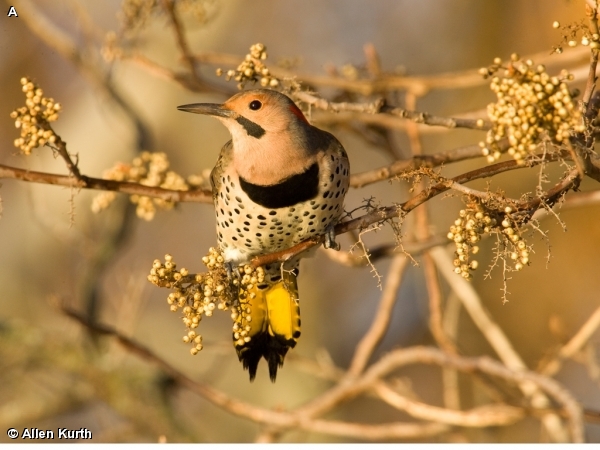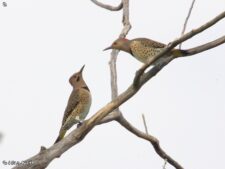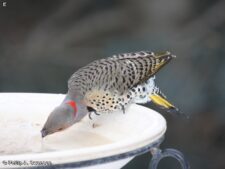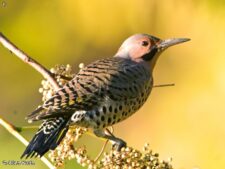
12.5 inches long. The Northern Flicker is a large woodpecker with a gray cap and nape with a red crescent on the nape. The face, chin, and throat are tan. The wings and back are brown with black bars. There is a black crescent on the upper breast. The breast is beige and the belly is heavily spotted with black. The tail is dark from above. The white rump is highly visible in flight. The Yellow-shafted form is the one most likely to be seen in our area. Its tail and underwings are entirely yellow below. The tail and flight feathers have yellow shafts. The male has a black whisker while the female does not. The Red-shafted form is an occasional winter visitor to our area and does not have the red crescent on the nape. Also the wings are red rather than yellow and the male has a red whisker rather than a black whisker.
The Yellow-shafted form of the Northern Flicker is a common year round resident that breeds in the Forest. The Red-shafted form may occasionally show up in the winter.
The Northern Flicker was formed from the lumping of the Yellow-shafted Flicker and the Red-shafted Flicker. It is a common woodpecker of open woodlands and edges that often forages on the ground. It eats mostly ants and during the winter berries. A decline in its population is believed to be due to competition from European Starlings. The Northern Flicker the species plays a n important role in the ecology of woodland communities where it excavates many of the cavities later used by other hole-nesting species. The song is a bold repeated “wick-er, wick-er, wick-er”. The call is a single loud “clearrrr”.
Disclaimer: The content of NatureSearch is provided by dedicated volunteer Naturalists of Fontenelle Forest who strive to provide the most accurate information available. Contributors of the images retain their copyrights. The point of contact for this page is: Phil Swanson.





